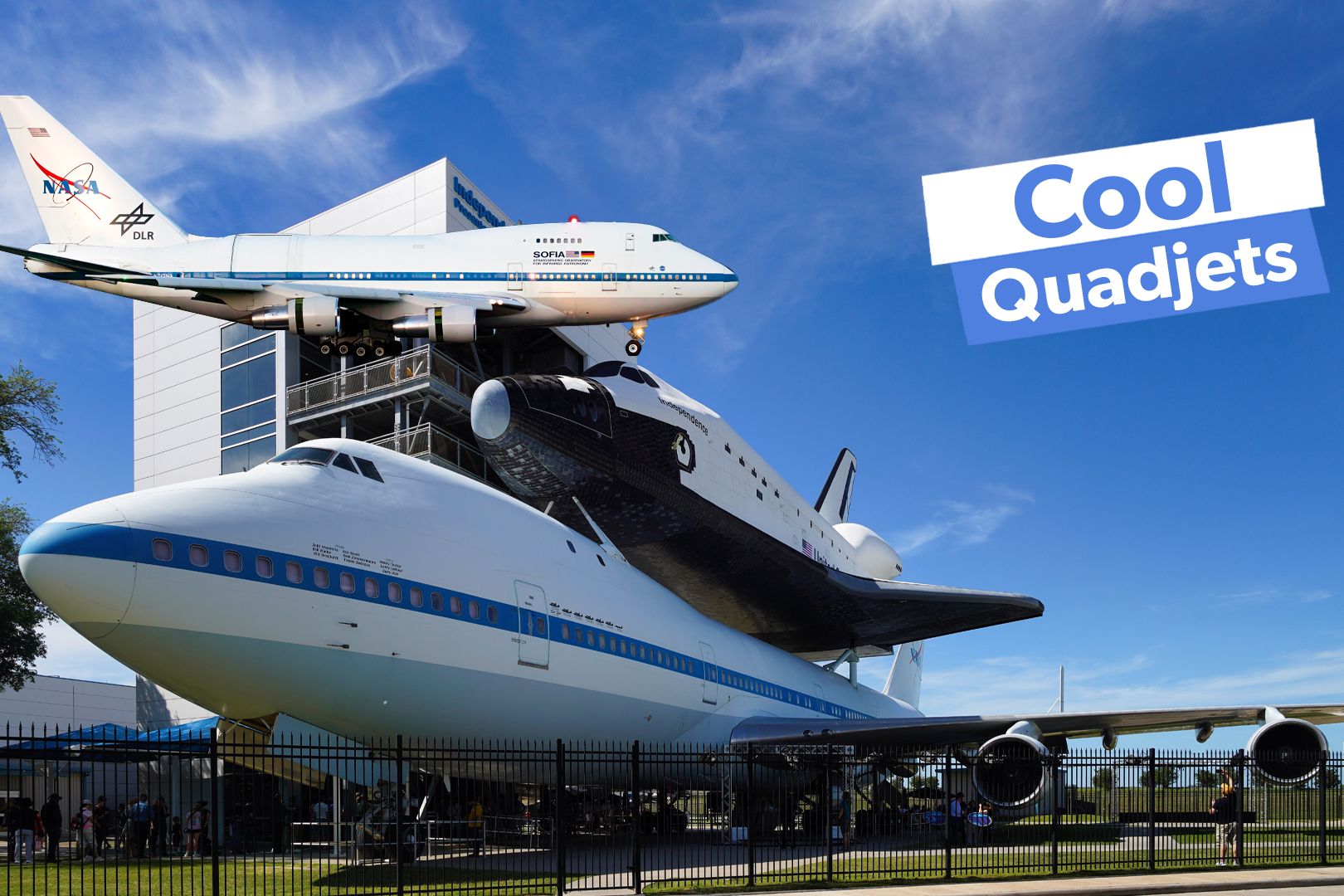Summary Boeing's 747 has undergone various modifications over its long production history, including being used as a cargo freighter, military aircraft, and presidential transport. The Boeing 747 Dreamlifter is a large cargo freighter used to transport aircraft components, while the VC-25 is a military version equipped with presidential amenities and defense systems. The Pratt & Whitney Testbed and Shuttle Carrier Aircraft are also notable modifications of the Boeing 747, used for engine testing and transporting space shuttles, respectively.
Often dubbed as the 'Queen of the Skies,' the iconic Boeing 747 began production over five decades ago before the final 747 was delivered in January 2023. Over the course of its production run, more than 1,500 747s were built, and within that time, the jumbo jet has undergone several variations and modifications. Besides being a passenger aircraft, the Boeing 747 has also been used as an air cargo freighter, military aircraft, scientific research aircraft, space and rocket shuttles, and presidential transport vehicles, to name a few.

While so many unique examples exist, here's a short list of our top five favorites in no particular order. 1 Dreamlifter The Boeing 747 Dreamlifter , otherwise known as the Boeng 747-400 Large Cargo Freighter, is an enormous modified widebody cargo aircraft. Boeing's Dreamlifter has an impressive capacity volume of up to 1,840 cubic meters, allowing it to carry nearly three times more cargo than the typical 747-400 freighter version.
And it was not just any type of cargo. Similar to the Airbus Beluga, the Dreamlifter is essential in transporting aircraft components - primarily of the Boeing 787 Dreamliners , from various supplier production sites to Boeing's Everett factory site in Washington. There are only four Dreamlifters worldwide, and before conversion, these four Boeing 747-400s once flew in the fleets of Air China, China Airlines, and Malaysia Airlines.
The outsized cargo giant flew for the first time in 2006. 2 VC-25 Commonly operated by the US Air Force under the callsign Air Force One when the President of the United States is onboard, the two Boeing VC-25s are another iconic modification of the jumbo jet. Considered a military version, the VC-25s have been fitted for presidential transport and are equipped with secure telephone and computer communication systems and mid-air refueling capabilities.
These VC-25s are also equipped with flares to counteract infrared homing missiles, defenses against an electromagnetic pulse blast, a chaff dispensing defense system for radar-guided missiles, and electronic countermeasures to jam enemy radars. The aircraft has also been retrofitted to include an office, a conference room, and private quarters for the President and the First Lady. Custom interiors, onboard defense systems and other quirks of presidential travel.
3 Pratt & Whitney Testbed Also known as the five-engined Boeing 747, the Pratt & Whitney Boeing 747SP aircraft was modified to test conceptual engine designs before entering regular manufacturing. But instead of having five engines under the two wings, the Pratt & Whitney 747 engine testbed had its fifth engine on a separate wing on top. While the outside appearance of the aircraft looks extraordinary, the inside also differs slightly.
Instead of having a cabin layout, Pratt & Whitney used the cabin space to house several different workstations for flight engineers. Each station measures different engine results and can update settings on the fly for optimal configuration. Not all parts of modern jet engines rotate at the same speed.
4 Shuttle Carrier Aircraft Although both have since been retired and are currently in a preserved state, the Shuttle Carrier Aircraft undoubtedly deserve to be mentioned. These are two extensively modified Boeing 747s - one being a 747-100 registered N905NA, and the other, a 747-100SR registered 911NA, operated by the National Aeronautics and Space Administration (NASA) aimed at transporting Space Shuttle orbiters. While first class seats were kept for NASA representatives and passengers, the aircraft had their main cabins and insulation removed, and their fuselages were strengthened significantly.
Mounting struts were also added on top of the fuselage to allow the attachment of Space Shuttles. Additional upgrades include enhanced vertical stabilizers, an internal escape system, better avionics, and engines. The aircraft was modified to launch rockets into space.
5 Stratospheric Observatory for Infrared Astronomy Often shortened as SOFIA, this particular modified Boeing 747SP also used to operate for NASA in a joint venture with the German Aerospace Center before its retirement last year. As its name suggests, SOFIA served as an airborne observatory, having been heavily modified to include a large door in the aft fuselage. This door can open mid-flight to allow a 2.
5-meter reflecting telescope full access to the sky, allowing scientists to conduct infrared astronomy observations from stratospheric altitudes. Flying at such heights also means the aircraft has received significantly major upgrades to structural, avionic, and flight management systems. There have been numerous findings with the Boeing 747SP.



















